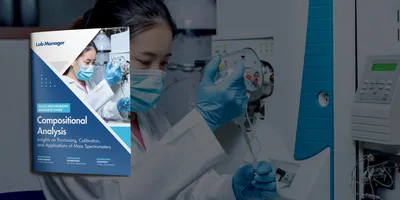The Role of Bloodstains in Forensic Science
Forensic science has captivated the public through true crime media, highlighting how investigators use scientific methods such as bloodstain pattern analysis (BPA), fluid dynamics, and impact analysis to reconstruct crime scenes. Bloodstains, in particular, serve as critical forensic markers, providing evidence on force, weapon type, victim positioning, and sequence of events during an incident.
Traditionally, forensic experts analyze blood spatter patterns to determine key factors such as directionality, velocity, point of origin, and surface interactions. However, research has uncovered an often-overlooked forensic detail—bloodstain 'tails'—which may provide additional investigative insights. These elongated projections extending from elliptical stains hold untapped information regarding the size, speed, and angle of impact of the blood droplet. By incorporating tail length analysis into forensic methodologies, investigators could improve accuracy in crime scene reconstructions and strengthen forensic evidence in legal proceedings.
New Insights from Bloodstain 'Tails'
A study published in Physics of Fluids by AIP Publishing, conducted by researchers from Boston University and the University of Utah, examined how the small protrusions, or "tails," extending from elliptical bloodstains can reveal previously untapped details about crime scenes.
The Formation of Bloodstain Tails
When blood droplets impact a surface, they typically create elliptical stains, with the direction of travel inferred from the shape and orientation of the stain. Investigators have long used these tails to determine the trajectory of blood spatter, but beyond that, they have largely been ignored.
"These protrusions are typically only used to get a sense of the direction that the drop traveled, but are otherwise neglected," said James Bird, an author of the study.
This new study demonstrates that bloodstain tails can yield independent and valuable information beyond trajectory. Researchers found that the length of the tail is determined by fluid dynamics distinct from those that shape the elliptical stain. This means that tail length provides additional forensic markers, such as:
- The size of the blood droplet.
- The impact speed at which it hit the surface.
- The angle of impact, which can be crucial in reconstructing crime scenes.
Experimental Approach: High-Speed Blood Drop Analysis
Previous studies primarily examined large blood droplets falling vertically onto flat or inclined surfaces, where gravity often distorted the resulting stain. However, in this research, scientists conducted high-speed experiments using human blood droplets smaller than a millimeter in diameter, impacting horizontal surfaces at varying angles.
"We show that the precise flow that determines the tail length differs from the flow responsible for the size and shape of the elliptical portion of the stain," explained Bird.
By analyzing how different blood droplet sizes and impact velocities affected tail formation, researchers could reconstruct blood drop trajectories with greater accuracy than traditional methods.
Practical Applications for Crime Scene Investigations
Improving Bloodstain Pattern Analysis (BPA)
Bloodstain pattern analysis (BPA) plays a fundamental role in forensic investigations. By integrating tail length measurements into standard BPA, forensic scientists can:
- More accurately determine the origin of blood spatter by backtracking individual droplets.
- Enhance crime scene reconstructions by distinguishing different blood spatter sources.
- Corroborate witness testimonies by verifying or refuting statements about how an incident occurred.
Toward a More Robust Forensic Toolkit
This study only examined bloodstains on horizontal surfaces, but the findings could pave the way for broader investigations into the role of tail length in real-world crime scenes with variable surfaces and angles.
"Incorporating tail length into standard bloodstain analyses will produce more robust evidentiary information," Bird and his colleagues suggested.
Future research may explore:
- How different surfaces (e.g., fabric, wood, metal) affect tail formation. The porosity, texture, and absorbency of a surface can influence how blood spreads and dries, potentially altering the visibility and accuracy of tail length measurements.
- The impact of multiple blood sources and interactions between overlapping stains. When blood from different sources or events mixes, it can create complex patterns that challenge forensic interpretation, requiring advanced analysis techniques to distinguish individual droplets.
- The role of environmental factors such as air resistance and surface texture. Wind, humidity, and temperature can alter blood droplet trajectories and drying times, affecting how tails form and how reliable they are for forensic reconstruction.
Conclusion
The study provides a compelling case for forensic scientists to reevaluate how they interpret bloodstain evidence. Bloodstain "tails," long dismissed as minor details, could revolutionize crime scene analysis by offering a more detailed and scientifically grounded method of reconstructing the events leading up to a crime.
Advanced Lab Management Certificate
The Advanced Lab Management certificate is more than training—it’s a professional advantage.
Gain critical skills and IACET-approved CEUs that make a measurable difference.
By integrating these findings into forensic investigations, law enforcement agencies could enhance their ability to uncover the truth and ensure that justice is served based on the most accurate scientific evidence available.












